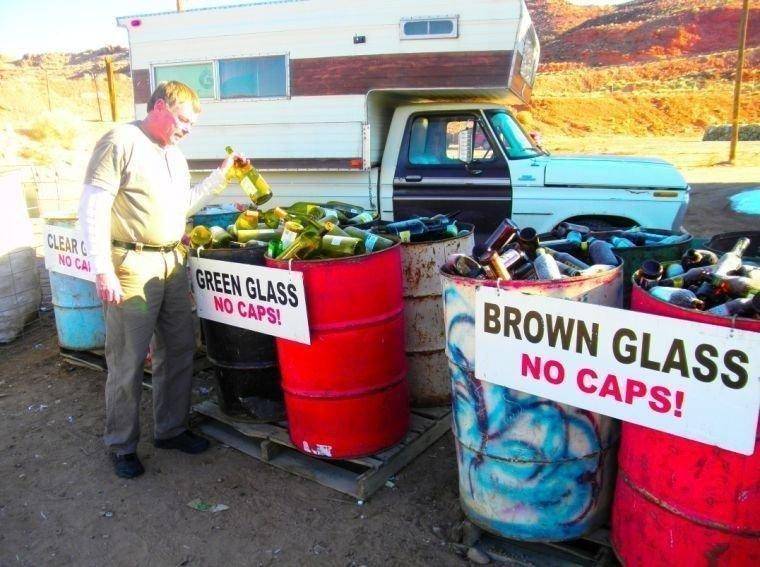В
Every few weeks Robert Hull brings recyclables from Pack Creek Ranch to the recycling center on Sand Flats Road. He was surprised to learn the glass he brought 20 miles into town and was sorting by color was not going to be recycled, but rather taken to the landfill.
В
“I don’t know how I feel about it. It seems like a waste,” Hull said.
Tom Edwards, the director of Grand County’s Solid Waste Special Service District, agreed with Hull. But the problem, said Edwards, is that until now it simply has not been cost effective to recycle that glass and there is no space to store it.
However, if all goes according to plan that will soon change. Edwards is in the process of negotiating with Momentum Recycling based in Salt Lake City.
“We have been looking for a new place to recycle the glass since we started stockpiling it four and a half years ago,” said Danny Jones, an operator at the recycling center. “But we are too far away from all the recyclers for it to be feasible.”
Four and a half years ago Coors Brewery in Colorado changed and automated the system they used to recycle glass, said Sara Melnicoff, the founder of Moab Solutions, a non-profit that promotes recycling in the area. The county’s solid waste district had until then sold all of the recycling center’s glass to them. But with changes at the brewery, the glass was required to be shipped in belly trucks, which have unloading doors on the bottom of the containers.
The problem is that belly trucks are normally used to transport animal feed, and thus it was difficult to find a driver willing to transport the glass in the same truck.
However, Penny Jones, the former president of Canyonlands Community Recycling (CCR), the group that opened and ran the recycling center before it transferred to the Solid Waste District, believes that CCR was able to find a solution and that the county only wanted the glass for their landfills.
“In CCR’s opinion we don’t consider using the glass in the landfill as a good alternative. We would rather see it recycled and we think that that was and is possible,” she said.
Edwards disagreed, saying that the solid waste district didn’t have another cost-effective alternative.
The recycling center stockpiled the glass for two years. Then the solid waste district started mixing crushed glass with dirt to use it as intermediate filler to put over the trash in the landfill to make sure that none of the trash blew away.
“We spread the glass on top of the trash, crush it with a dozer, then put dirt on it. We didn’t want to have to use so much dirt,” Edwards said.
There is only so much dirt available at the landfill for covering the garbage. When that runs out then the solid waste district will have to ship dirt to the landfill and “that’s expensive.”
Discarded asphalt from driveways, roads and bike paths is also used as filler in the same way when it is available.
Another problem with shipping the county’s glass to be recycled is that the glass needs to be very clean. When the glass is sorted and stored in a desert it can pose a challenge. This was demonstrated in 2011 when the solid waste district sent a shipment of glass to a new recycler and was told it was too contaminated with dust, Danny Jones said.
“I’m not sure how many people know (the glass is not getting recycled), but I tell anyone who asks,” Danny Jones said.
Even though the sorted glass at the recycling center is now mixed together before it is broken in the landfill, the choice was made to have the public continue to separate it.
“It’s a good idea to keep people sorting it because it’s harder to retrain the public to do it again once we start needing to. We want them to stay used to it because when it goes out again it will need to be sorted by color,” Melnicoff said.
Edwards is now in talks with Momentum for them to buy the glass. However, the prices now being discussed aren’t enough to cover the cost of the truck.
“Since the glass won’t pay for the trucks I will be throwing newspapers on there as well,” Edwards said.
The additional sale of those papers should allow the shipments to break even with the transport costs.
Other possible solutions would be to restart shipping the glass to Coors, or to use the glass for roadbeds, Penny Jones said.
“I’d rather see the glass getting recycled than having to use it in the landfill, though it is saving us money,” Edwards said.
Read more from MOABSUNNEWS.com
В

